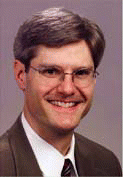In general, studies show agreement between attended and unattended home-based sleep studies and sleep-based lab polysomnography. Home sleep studies can be used more confidently in patients with a high pretest probability (>50%) of obstructive sleep apnea and therefore perform better in sleep apnea referral clinics than at-large community screenings, Dr. Gillespie said.
Explore This Issue
March 2008Studies are lacking comparing home sleep studies versus polysomnography for other important outcomes, such as clinical treatment decisions, and patient-based outcomes, such as morbidity and mortality, daytime sleepiness, and sleep-related quality of life, he said.
The true cost of sleep testing with either modality is difficult to calculate. Although home sleep studies are less costly to perform, unusable data are reported in 16% of tests, compared with 6% of polysomnography assessments. Home sleep studies may be less effective than polysomnography in maximizing patient outcomes. Therefore, the excess costs of polysomnography may be justified and are not excessive based on third-party willingness to pay, Dr. Gillespie told listeners.
CPAP
CPAP is considered first-line therapy for obstructive sleep apnea, Dr. Brietzke said. Two extensive reviews by the Cochrane Collaboration have demonstrated the effectiveness of this modality. Subjective evaluations by patients treated with CPAP show a significant improvement in daytime sleepiness, but objective measurements are less robust in favor of CPAP, Dr. Brietzke stated.
However, CPAP works only if patients are compliant, and data show poor acceptance by patients. Studies show that 46% to 85% of patients use CPAP appropriately, he said. Efforts at improving compliance include autotitrating CPAP, biPAP, humidification, and education of patients. Studies comparing autoCPAP versus CPAP show a small effect in favor of autoCPAP, he said. Most patients prefer autoPAP because it delivers lower pressure. Studies of biPAP versus standard CPAP show no difference between these modalities, and more data are needed on the effectiveness of humidification. Studies suggest that education interventions and cognitive behavioral therapy can improve compliance.
Nasal Surgery
Dr. Brietzke said that there is only indirect evidence to suggest that nasal surgery can improve CPAP tolerance. Three studies suggest that the combination of nasal surgery with hypopharyngeal surgery is associated with low complication rates and results in patient satisfaction. Dr. Brietzke said that although nasal surgery can reduce airway resistance, thereby lowering CPAP pressure requirement, it is unclear whether this results in improved compliance.
Nasal surgery alone does not improve the apnea/hypopnea index [AHI] and has success rates of 20 percent, he stated.
UPPP
The database in support of uvulopalatopharyngoplasty (UPPP) was reviewed by Edward M. Weaver, MD, Associate Professor of Otolaryngology and Chief of Sleep Surgery at the University of Washington School of Medicine in Seattle.

Leave a Reply